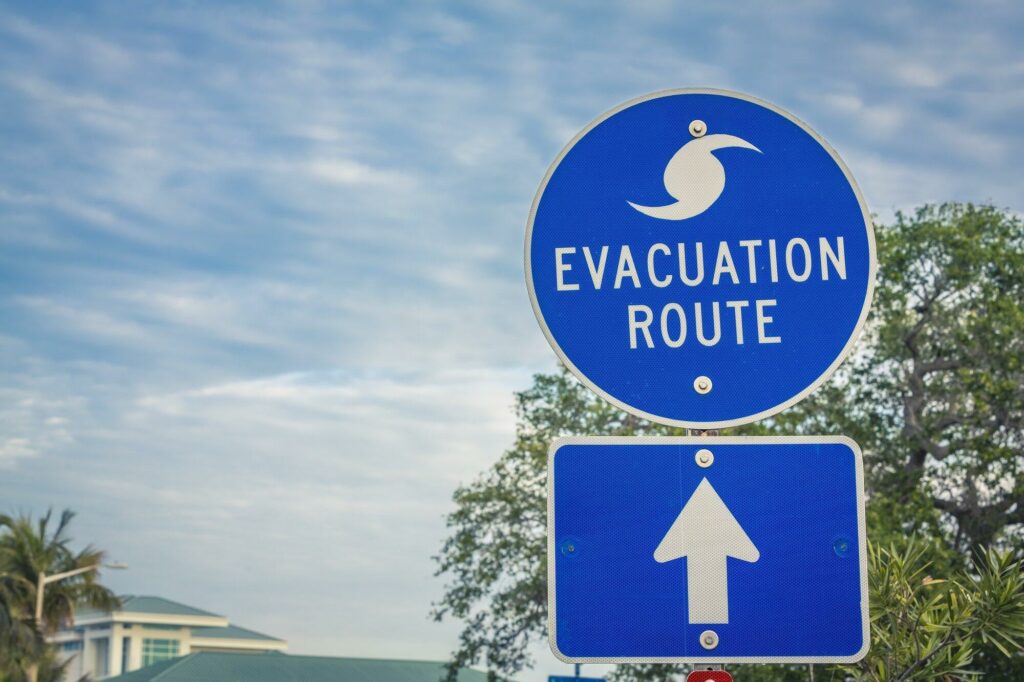
Close to 23 million people live in Florida, a number that’s projected to grow in the coming years. If you’re part of this population, you’re likely well aware of the persistent threat of hurricanes.
Sure, these natural disasters are always unpredictable. But you can ease anxiety by knowing your general risk level. Now, let’s delve into the areas in Florida that have historically seen the most intense storms.
Southeast Florida
Southeast Florida, encompassing Miami, Fort Lauderdale, and West Palm Beach, is no stranger to hurricanes. Think Andrew (1992), Wilma (2005), and Irma (2017). Several factors make this area particularly susceptible to hurricanes.
These include:
Flat Terrain
Unlike other parts of Florida, Southeast Florida lacks elevated areas to deflect or weaken storms. This allows hurricanes to maintain their strength as they approach the coast. This brings stronger winds and storm surge.
Prominent Peninsula
Jutting out into the Atlantic, the peninsula acts like a funnel. This concentrates storm energy and amplifies potential impacts.
Many Bays and Inlets
The many bays and inlets create complex coastlines. These increase the vulnerability to storm surge flooding and the potential for damage in low-lying areas.
Warm Ocean Temperatures
The warm waters of the Gulf Stream and Atlantic Ocean fuel hurricanes, providing the energy they need to grow and intensify. Southeast Florida sits directly in the path of these warm currents. This makes it prime territory for hurricane development.
These factors show the region’s vulnerability and highlight the need for continued hurricane preparedness and mitigation efforts. Despite the high risk, proactive communities and improved building codes make it more resilient today.
Key West & Florida Keys
The Florida Keys, with their laid-back island vibe, sit at the forefront of many storms charging up from the Caribbean. Recent hurricanes like Irma (2017) and Michael (2018) act as a reminder of the Keys’ vulnerability to nature’s destruction.
Compared to mainland Florida, the Keys are low-lying, barely scraping above sea level. This means a storm surge can easily inundate large areas, resulting in a widespread natural disaster.
Since the Keys jut out into the open waters of the Caribbean Sea, they lack the natural barrier of a mainland coastline. This leaves them directly exposed to the full force of hurricane winds and waves. Here, the combination of wind, rain, and surge can be particularly challenging, given the Keys’ low elevation and isolation.
If you have a private boat for cruising the Florida Keys’ waters, signing up for boat marine insurance can be an excellent move.
Southwest Florida
Southwest Florida, particularly the Fort Myers-Naples area, is known for its stunning bays and inlets. These bodies of water play a significant role in the region’s charm and offer a variety of activities and benefits. However, they’re also on the frontline of hurricane impacts.
The Southwest Florida area took the brunt of hurricanes like Charley in 2004 and more recently, Irma, which had a devastating impact. The geography here can amplify the effects of storm surges. This makes preparation and evacuation plans critical for residents.
Getting affordable home insurance is a smart way to reduce the impact of hurricane events on your SW Florida home.
West Florida
This area, encompassing Tampa, St. Petersburg, Sarasota, and Clearwater, has historically avoided direct hits from the most powerful storms. However, it is by no means immune.
Much of West Florida has a relatively low elevation, making it vulnerable to storm surge and flooding. The shallow bays in this area add to the risk.
Tampa Bay, in particular, is shallow, allowing storm surges to build up quickly and inundate coastal areas. This was evident during Hurricane Irma, causing widespread flooding. If you live in Tampa, FL, consider homeowners insurance for your home.
Even tropical storms can cause significant hurricane damage, as seen with Tropical Storm Eta in 2020.
Central Florida Atlantic Coast
The Central Florida Atlantic Coast (Melbourne-Cocoa Beach) has had its share of brushes with hurricanes, often facing the winds and rain of storms moving up the coast. While direct hits are less common than in the Southeast, the area still prepares for the impact of hurricanes passing nearby.
This area juts eastward, acting like a “bullseye” for storms moving up the coast. The combination of coastal and inland communities here means a wide range of impacts, from beach erosion to wind damage further inland.
Florida Panhandle
The Florida Panhandle (Pensacola-Panama City) area is well-acquainted with hurricanes, given its Gulf Coast location. Hurricanes like Michael in 2018 have shown just how devastating a direct hit can be, with catastrophic wind damage and storm surge.
The warm loop current in the Gulf of Mexico provides the warm water and moisture that hurricanes need to grow and intensify. As storms approach the Panhandle, they’re often fueled by this current. This makes them more powerful upon arrival.
Plus, the jet stream, a high-altitude wind pattern, often steers hurricanes toward the Panhandle. This is because the jet stream dips southward in this region, creating a pathway for storms to follow.
The Panhandle’s geography, with its wide, shallow continental shelf, can exacerbate storm surge. This makes it a significant hurricane concern for communities along this stretch.
Why Property Owners in Hurricane-Prone Areas in Florida Need Insurance Coverage
Hurricanes are a fact of life in Florida, hitting every corner differently. But one thing stays the same. The preparedness and resilience spirit of the state’s inhabitants stays the same. From making buildings tougher to figuring out better escape routes, Floridians always adapt to face storms head-on and come back even stronger.
Having the right insurance policy helps, too.
Hurricane insurance covers damage from the winds and rain that hurricanes bring. This helps to lessen the financial hit. So, choose a good policy and join the Florida tradition of facing hurricane challenges head-on.
Get Custom Insurance Products in Florida Today
Hurricane insurance isn’t a one-size-fits-all solution for hurricane-prone areas in Florida. You can choose different coverage types and deductibles to match your budget and risk tolerance. This customization helps you mitigate hurricane risks without overspending.
At HH Insurance, we understand that every Floridian faces unique hurricane risks and challenges. That’s why we strive to provide custom insurance solutions at affordable rates.
Feel free to get in touch with us to request a free quote.
**This blog provides a brief overview of the terms and phrases used within the insurance industry. These definitions are not applicable in all states or for all insurance and financial products. This is not an insurance contract. Other terms, conditions and exclusions apply. Please read your official policy for full details about coverage. These definitions do not alter or modify the terms of any insurance contract.
